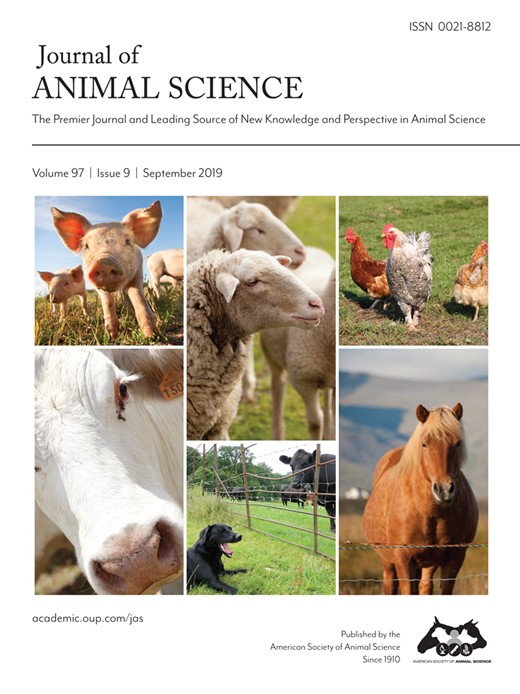-
Views
-
Cite
Cite
Piush Khanal, Christian Maltecca, Clint Schwab, Kent Gray, Francesco Tiezzi, Genetic parameters of meat quality, carcass composition, and growth traits in commercial swine, Journal of Animal Science, Volume 97, Issue 9, September 2019, Pages 3669–3683, https://doi.org/10.1093/jas/skz247
Close - Share Icon Share
Abstract
Swine industry breeding goals are mostly directed towards meat quality and carcass traits due to their high economic value. Yet, studies on meat quality and carcass traits including both phenotypic and genotypic information remain limited, particularly in commercial crossbred swine. The objectives of this study were to estimate the heritabilities for different carcass composition traits and meat quality traits and to estimate the genetic and phenotypic correlations between meat quality, carcass composition, and growth traits in 2 large commercial swine populations: The Maschhoffs LLC (TML) and Smithfield Premium Genetics (SPG), using genotypes and phenotypes data. The TML data set consists of 1,254 crossbred pigs genotyped with 60K SNP chip and phenotyped for meat quality, carcass composition, and growth traits. The SPG population included over 35,000 crossbred pigs phenotyped for meat quality, carcass composition, and growth traits. For TML data sets, the model included fixed effects of dam line, contemporary group (CG), gender, as well as random additive genetic effect and pen nested within CG. For the SPG data set, fixed effects included parity, gender, and CG, as well as random additive genetic effect and harvest group. Analyses were conducted using BLUPF90 suite of programs. Univariate and bivariate analyses were implemented to estimate heritabilities and correlations among traits. Primal yield traits were uniquely created in this study. Heritabilities [high posterior density interval] of meat quality traits ranged from 0.08 [0.03, 0.16] for pH and 0.08 [0.03, 0.1] for Minolta b* to 0.27 [0.22, 0.32] for marbling score, except intramuscular fat with the highest estimate of 0.52 [0.40, 0.62]. Heritabilities of primal yield traits were higher than that of primal weight traits and ranged from 0.17 [0.13, 0.25] for butt yield to 0.45 [0.36, 0.55] for ham yield. The genetic correlations of meat quality and carcass composition traits with growth traits ranged from moderate to high in both directions. High genetic correlations were observed for male and female for all traits except pH. The genetic parameter estimates of this study indicate that a multitrait approach should be considered for selection programs aimed at meat quality and carcass composition in commercial swine populations.





